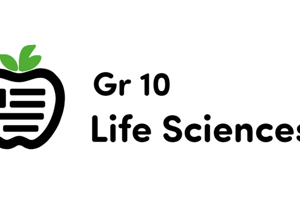Podcast
Questions and Answers
What is the main purpose of taxonomy?
What is the main purpose of taxonomy?
- Naming organisms (correct)
- Creating classification systems for marine organisms
- Navigating scientific articles
- Developing DNA analysis techniques
How many main kingdoms are included in the current taxonomic system?
How many main kingdoms are included in the current taxonomic system?
- Six
- Five (correct)
- Seven
- Four
What has significantly influenced our understanding of species relationships according to the text?
What has significantly influenced our understanding of species relationships according to the text?
- Recent advancements in marine research
- Updates in classification systems
- Taxonomic classification shifts
- DNA analysis advancements (correct)
What is a challenge in developing a classification system for science media?
What is a challenge in developing a classification system for science media?
How do taxonomic classification systems reflect scientific knowledge according to the text?
How do taxonomic classification systems reflect scientific knowledge according to the text?
What is the primary basis for classifying drugs in the Biopharmaceutics Classification System (BCS)?
What is the primary basis for classifying drugs in the Biopharmaceutics Classification System (BCS)?
How many classes make up the Biopharmaceutics Classification System (BCS)?
How many classes make up the Biopharmaceutics Classification System (BCS)?
What are BCS Class II drugs characterized by?
What are BCS Class II drugs characterized by?
What challenges are associated with BCS Class II drugs' properties according to the text?
What challenges are associated with BCS Class II drugs' properties according to the text?
Study Notes
Classification Systems in Science: Understanding Different Approaches and Applications
Classification systems play a vital role in various fields of science, from biology to chemistry and beyond. These systems allow us to categorize, organize, and understand complex concepts and phenomena. Here, we delve into different classification systems, their applications, and the debates surrounding their uses.
Biopharmaceutics Classification System (BCS)
The BCS is a widely accepted system used in drug discovery, product development, and drug product regulatory sciences. It classifies drugs based on their solubility and intestinal permeability, which influence oral drug absorption. The system consists of four classes: I, II, III, and IV, each characterized by specific solubility and permeability profiles. The BCS has proven to be a useful tool in drug development, guiding researchers in designing appropriate formulations and improving bioavailability.
BCS Class II Drugs and Their Extensions
For BCS Class II drugs, the low solubility and permeability may lead to high luminal concentrations, potentially causing non- sink conditions and affecting the drug's effectiveness. To address these challenges, sub-classification extensions have been proposed, considering factors like pKa, solubility, and luminal conditions. These adjustments aim to improve the accuracy and predictability of in vivo dissolution methods for drug development.
Taxonomic Classification of Species
Taxonomy is the branch of biology concerned with classifying and naming organisms. The current system, originally developed by Carl Linnaeus, includes five main kingdoms (Animals, Plants, Fungi, Protista, and Monera), which are divided into phyla, classes, orders, families, and other lower levels. Over time, as new species are discovered and our understanding evolves, taxonomic classifications are updated and refined. Recent advancements in DNA analysis have significantly influenced our understanding of species relationships and led to changes in the classification of various organisms.
Wild Extrapolation: A Classification System for Science Media
A classification system for science media can help readers navigate the complexity of scientific articles, especially those dealing with controversial topics or complex terminologies. By assigning labels based on the nature of the content, readers can quickly identify the focus and relevance of an article. However, this approach can be challenging due to the inherent ambiguity in defining the nature of scientific discourse.
Developing a Classification System for Marine Organisms
As part of a classroom activity, students can create their own classification system for marine organisms, learning about the importance of general classification and experiencing the process of devising and revising their own approaches. This exercise highlights the iterative nature of scientific classification and encourages critical thinking and collaboration among learners.
Conclusion
Classification systems are integral to various branches of science, guiding research, development, and our understanding of complex phenomena. While these systems offer valuable frameworks, they are not static. New information and technological advances lead to updates and shifts in taxonomic classifications, indicating the dynamic and evolving nature of scientific knowledge.
Studying That Suits You
Use AI to generate personalized quizzes and flashcards to suit your learning preferences.
Description
Test your knowledge on classification systems in science, ranging from the Biopharmaceutics Classification System (BCS) to taxonomic classifications of species and beyond. Explore how these systems categorize and organize complex concepts in various scientific fields.




